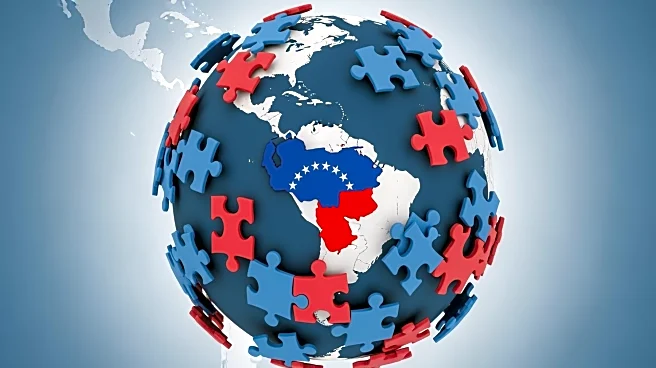What's Happening?
Defense Secretary Pete Hegseth is set to unveil significant changes to the Pentagon's weapons acquisition process, aimed at accelerating technology procurement amid increasing global threats. The reforms
include the establishment of Portfolio Acquisition Executives who will have direct authority over major weapons programs, eliminating bureaucratic layers. The acquisition chain will now run directly from program managers to these executives, bypassing intermediate approval layers. Additionally, the reforms mandate at least two qualified sources for critical program content through initial production. These changes are part of a broader effort to streamline the Defense Acquisition System, as outlined in an executive order signed by President Trump.
Why It's Important?
The reforms are crucial for aligning the Pentagon's acquisition processes with the demands of modern warfare, ensuring rapid technology deployment to counter global threats. By reducing bureaucratic hurdles, the Pentagon aims to enhance accountability and incentivize faster procurement. This shift is expected to benefit newer defense entrants and challenge legacy contractors to adapt to a more competitive environment. The changes could lead to increased innovation and efficiency in the defense sector, potentially impacting U.S. military readiness and global strategic positioning.
What's Next?
The Pentagon will implement these reforms through monthly Acquisition Acceleration Reviews chaired by the Under Secretary of Defense for Acquisition and Sustainment. These reviews will track progress, remove barriers, and monitor competition within the defense industrial base. The restructuring is expected to prompt reactions from major defense contractors, who may need to adjust their business models to remain competitive. The focus on commercial products and fixed-price contracts could further reshape the defense procurement landscape.
Beyond the Headlines
The reforms may have broader implications for U.S. foreign military sales, as the Pentagon seeks to improve its role as a customer to allies and partners. This could enhance the interoperability of weapons systems globally, strengthening U.S. strategic alliances. The emphasis on commercial technology and speed may also drive cultural shifts within the defense industry, fostering a more dynamic and innovative environment.













